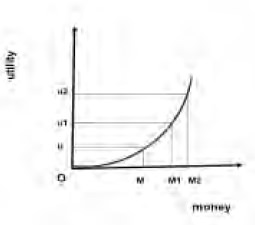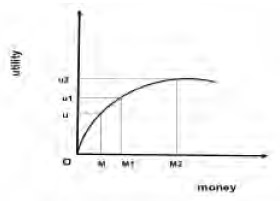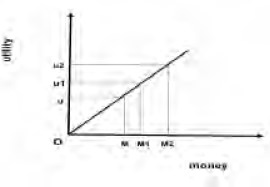Managerial Economics - Analysis Of Risk And Uncertainty
Types Of Risks - Analysis Of Risk And Uncertainty
Posted On :
Choice of loss due the fact that all possible outcomes and their probability of occurrence are unknown.
Types Of
Risks:
Economic risk: Choice of loss due the fact that all possible outcomes and their probability of occurrence are unknown.
Uncertainty: When the outcomes of managerial decisions cannot be predicted with absolute accuracy but all possibilities and their associated probabilities of occurrence are known.
Business risk: Chance of loss associated with a given managerial decision.
Market risk: Chance that a portfolio of investments can lose money due to volatility in the financial market.
Inflation risk: A general increase in the price level will undermine the real economic value of any legal agreement that involves a fixed promise to pay over an extended period.
Interest rate risk: The changing interest rates affect the value of any agreement that involves a fixed promise to pay over a specified period.
Credit risk: May arise when the other party fails to abide by the contractual obligations.
Liquidity risk: Difficulty of selling corporate assets and investments.
Derivative risk: Chance that volatile financial derivatives could create losses on investments by increasing price volatility.

Variability: The extent to which the possible outcomes of an uncertain situation differ. This difference is called as deviation; it means difference between expected outcome and the actual outcome.
Manager’s attitudes toward risk affect the decision making. The preference towards risk is classified as, risk loving, risk aversion and risk neutral.
Risk loving: Arises when the payoff is greater than the expected value.

Risk Aversion: Is the behavior of the mangers when the pay off is less than the expected value.

Risk neutral: Behavior takes place when the expected value is equal to the payoff.

Economic risk: Choice of loss due the fact that all possible outcomes and their probability of occurrence are unknown.
Uncertainty: When the outcomes of managerial decisions cannot be predicted with absolute accuracy but all possibilities and their associated probabilities of occurrence are known.
Business risk: Chance of loss associated with a given managerial decision.
Market risk: Chance that a portfolio of investments can lose money due to volatility in the financial market.
Inflation risk: A general increase in the price level will undermine the real economic value of any legal agreement that involves a fixed promise to pay over an extended period.
Interest rate risk: The changing interest rates affect the value of any agreement that involves a fixed promise to pay over a specified period.
Credit risk: May arise when the other party fails to abide by the contractual obligations.
Liquidity risk: Difficulty of selling corporate assets and investments.
Derivative risk: Chance that volatile financial derivatives could create losses on investments by increasing price volatility.
Cultural
risk: Risk may arise due to loss of
markets differences due to distinctive
social customs.
Currency risk: Is the probable loss due to changes in the domestic currency value in terms of expected foreign currency.
Government policy risk: Chance of loss because of domestic and foreign government policies.
The above listed various types of risks are involved in business. Therefore it is essential for the manager to understand the type of risk and strategies to overcome the same. The manager must know the possible outcomes of a particular event, action or decision.The manager must be aware of the probability of risks in business. (Probability means likelihood that a given outcome will occur)
For example; a purchase of share may lead to three probable results i.e. either the price will increase, decrease or it can be the same. Objective interpretation relies on the frequency with which certain events tend to occur. Out of 100 shares, if 25 have increased and 75 have remained in the same level in the market then the probability of incurring profit is ¼. If there is no past experience then we go for subjective probability and based on our perception of occurrence we may measure the probability. But manager’s perceptions differ therefore they make different choices. In general probabilities are measured in two ways they are expected value and variability.
Expected value: The probable payoffs associated with all possible outcomes are called as expected value.
Currency risk: Is the probable loss due to changes in the domestic currency value in terms of expected foreign currency.
Government policy risk: Chance of loss because of domestic and foreign government policies.
The above listed various types of risks are involved in business. Therefore it is essential for the manager to understand the type of risk and strategies to overcome the same. The manager must know the possible outcomes of a particular event, action or decision.The manager must be aware of the probability of risks in business. (Probability means likelihood that a given outcome will occur)
For example; a purchase of share may lead to three probable results i.e. either the price will increase, decrease or it can be the same. Objective interpretation relies on the frequency with which certain events tend to occur. Out of 100 shares, if 25 have increased and 75 have remained in the same level in the market then the probability of incurring profit is ¼. If there is no past experience then we go for subjective probability and based on our perception of occurrence we may measure the probability. But manager’s perceptions differ therefore they make different choices. In general probabilities are measured in two ways they are expected value and variability.
Expected value: The probable payoffs associated with all possible outcomes are called as expected value.

Variability: The extent to which the possible outcomes of an uncertain situation differ. This difference is called as deviation; it means difference between expected outcome and the actual outcome.
Manager’s attitudes toward risk affect the decision making. The preference towards risk is classified as, risk loving, risk aversion and risk neutral.
Risk loving: Arises when the payoff is greater than the expected value.

Risk Aversion: Is the behavior of the mangers when the pay off is less than the expected value.

Risk neutral: Behavior takes place when the expected value is equal to the payoff.

Tags : Managerial Economics - Analysis Of Risk And Uncertainty
Last 30 days 900 views












